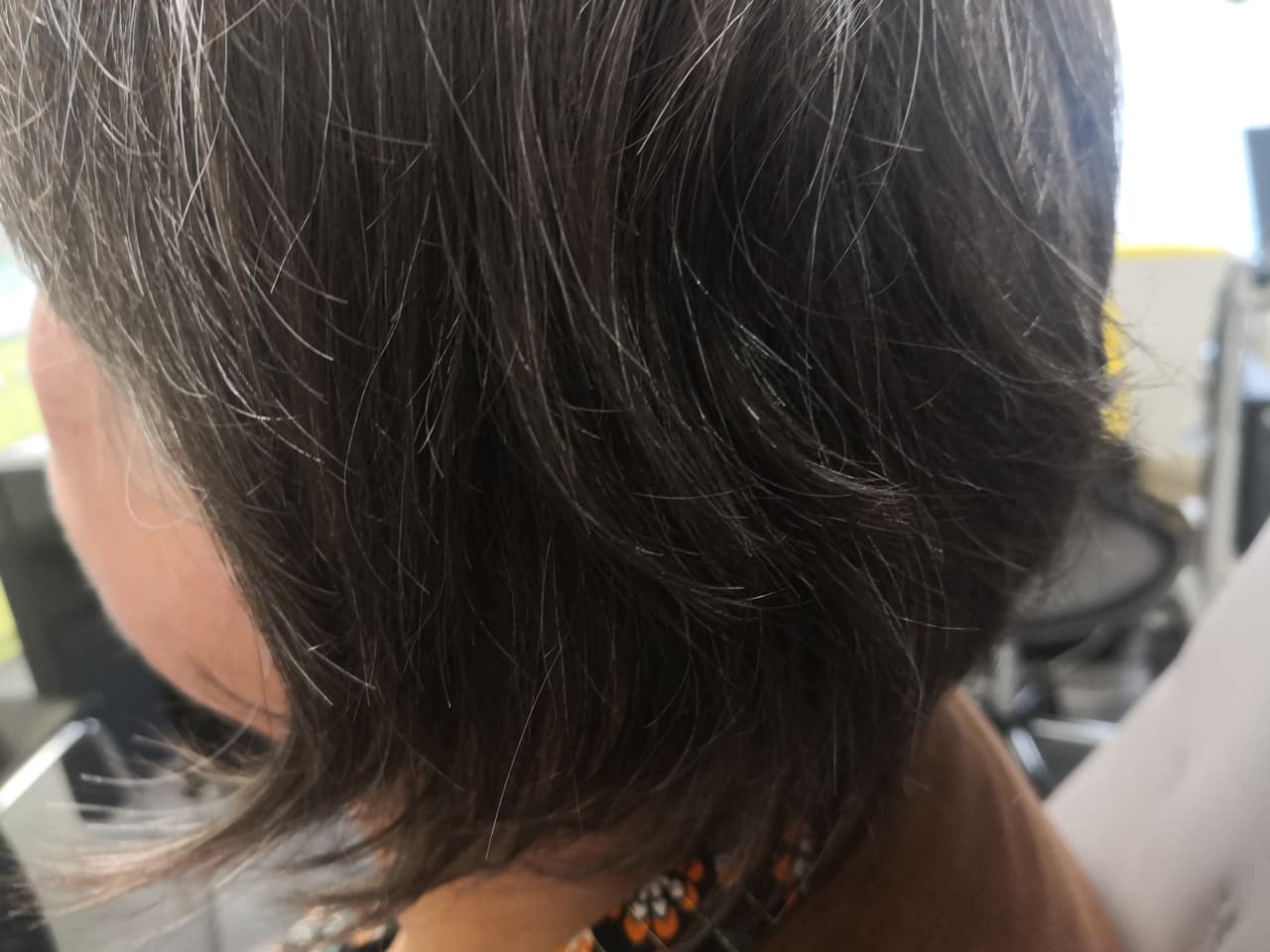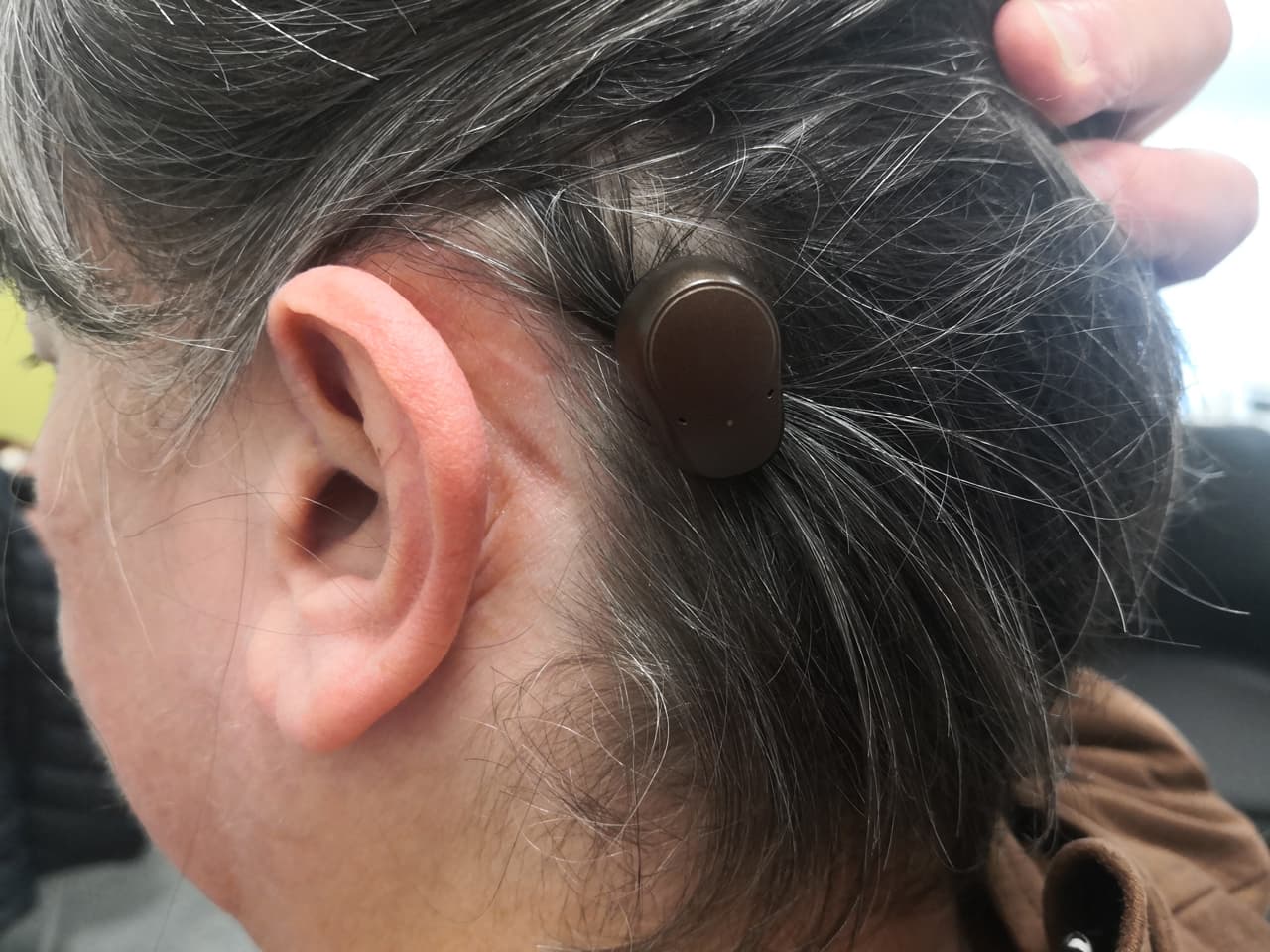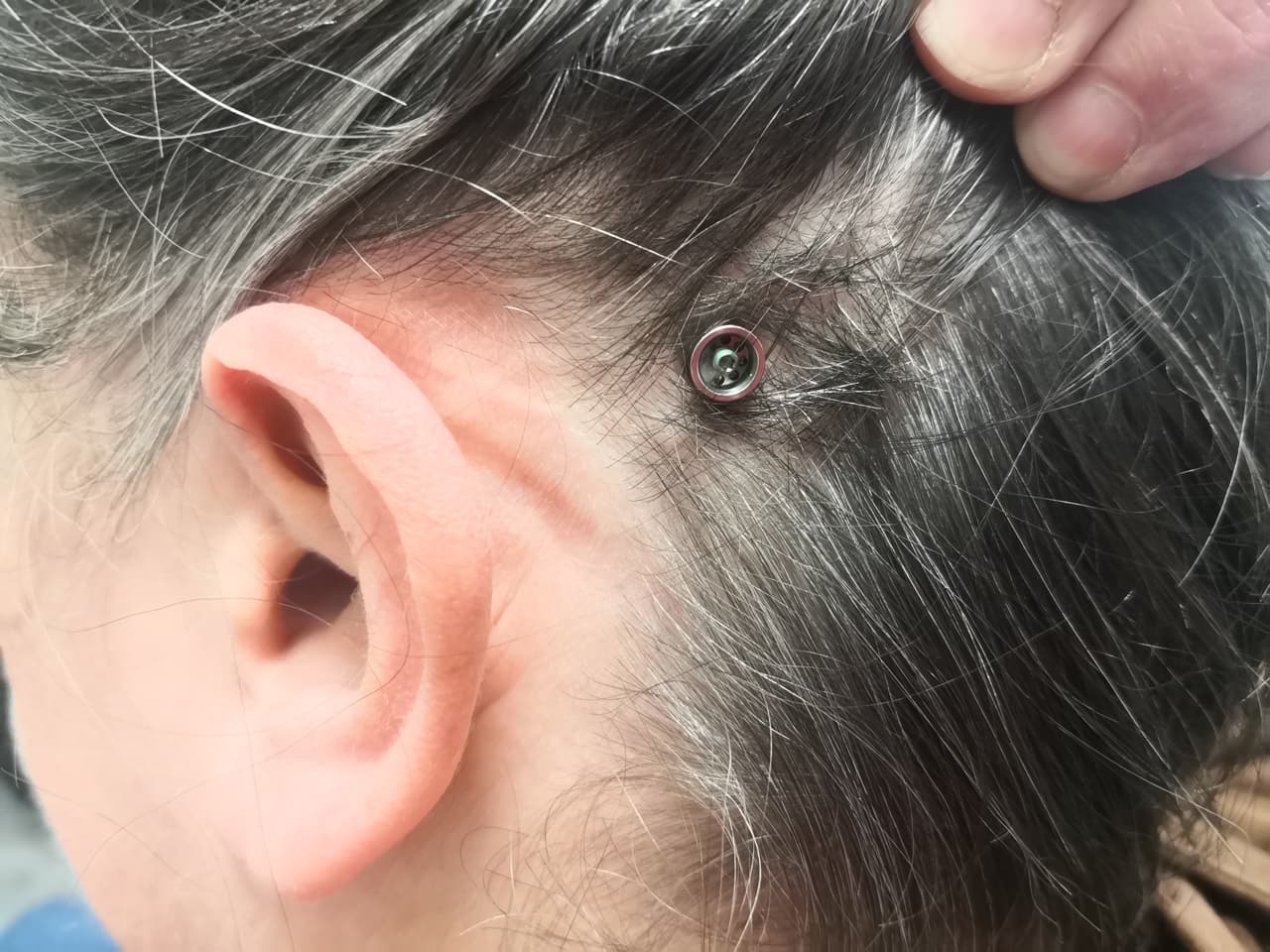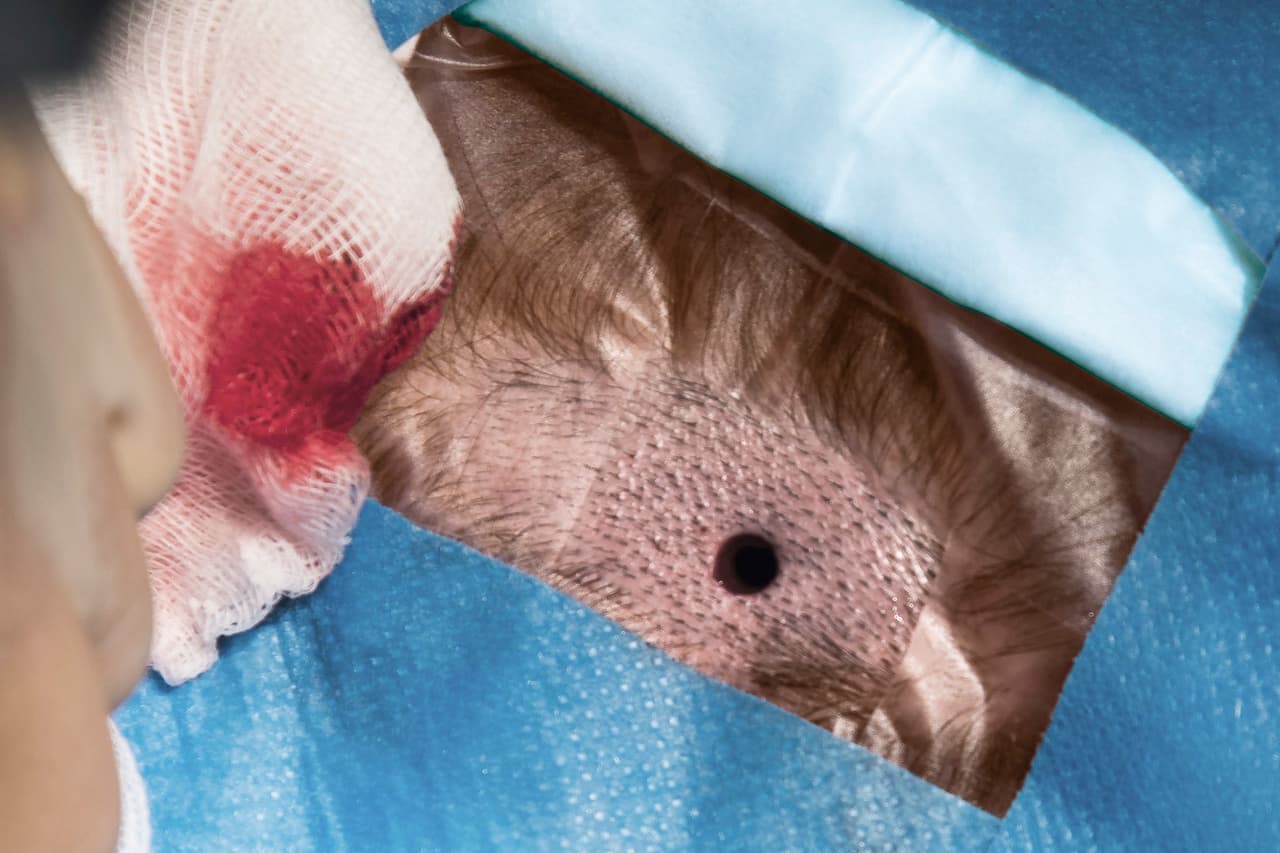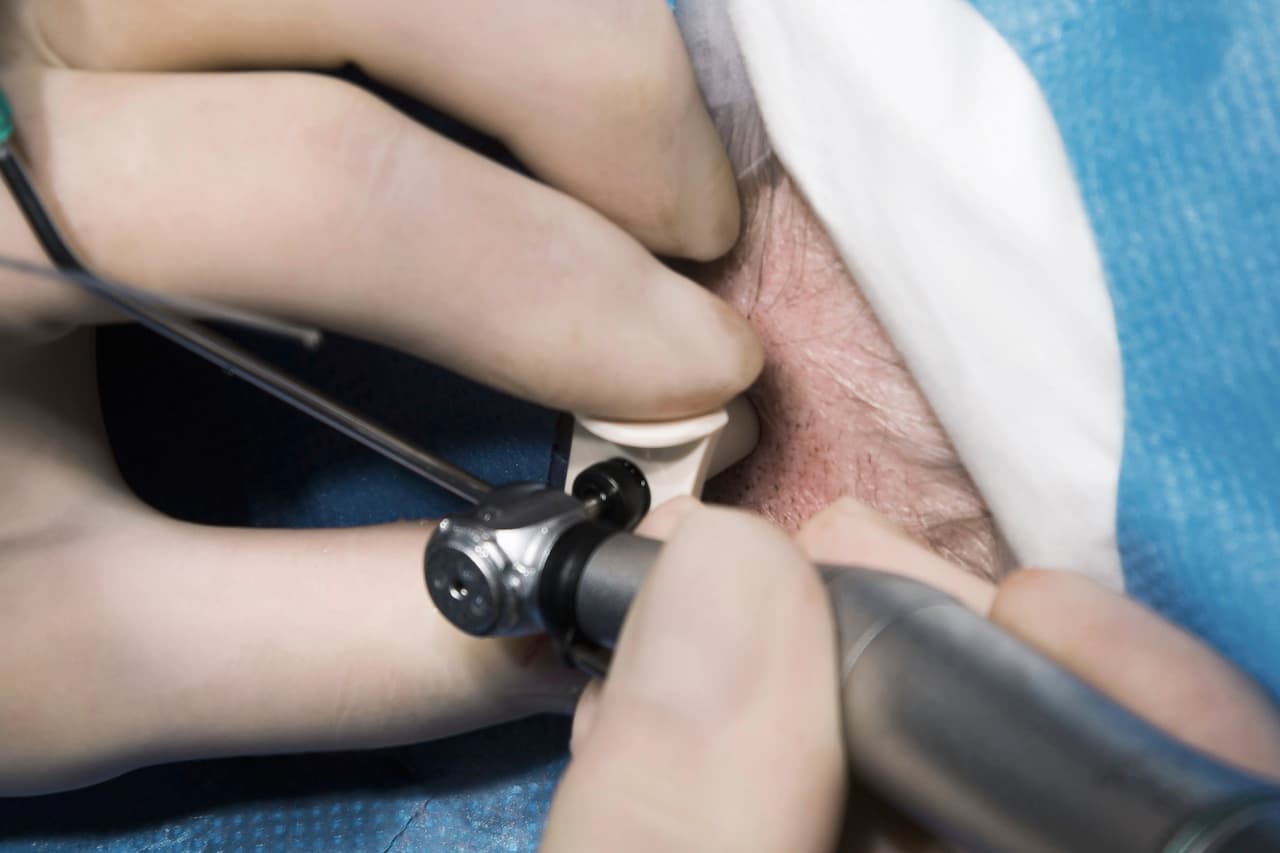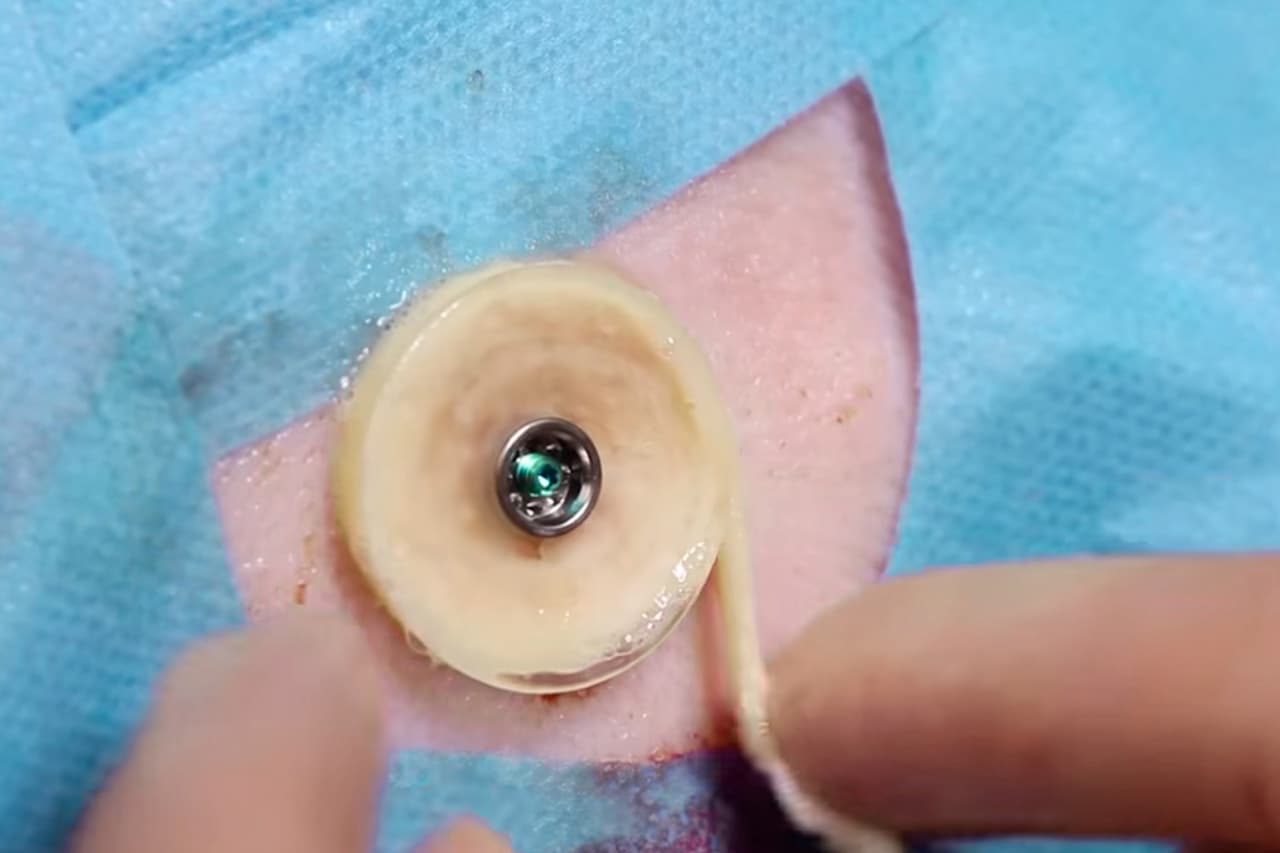Bone-anchored hearing prosthesis
Bone-anchored hearing aids are usually fitted under general anaesthetic. A titanium implant called a bone conduction implant is placed in the skull bone behind the ear, transmitting external sound to the inner ear via an external receiver clipped to an abutment. External sounds are transformed into vibrations, which travel through the skull bones to the inner ear, the sound-receiving organ.
The aim is to improve hearing in general and in noise, localize the source of sound and facilitate patient communication.
Find out more below from Dr Delagranda, ENT and cervico-facial surgeon at La Roche-sur-Yon in the Vendée.
Deafness and bone-anchored prosthesis
Deafness (or hypoacusis) is a generic term for reduced hearing acuity. Although there are rare cases of deafness of central origin, i.e. involving the brain or the auditory nerve (following a stroke or tumour, for example), the vast majority of deafness is linked to a problem in one or both ears. These are known as peripheral deafnesses. Peripheral deafness is subdivided into two broad categories, depending on the location of the lesion: conductive deafness, when the problem is in the outer or middle ear, and sensorineural deafness, when the problem is in the inner ear. The degree of deafness is assessed by audiometry (tonal by listening to pure tones, and vocal by listening to dissyllabic words), and classified as mild, moderate, profound or total deafness, also known as cophosis. Deafness can be unilateral, bilateral, symmetrical or not, or mixed when it is both conductive and perceptive.
Unilateral deafness is called SSD (single-sided deafness) when it affects one ear with moderate deafness up to cophosis, and a contralateral ear with normal hearing. There are many causes of SSD: sudden deafness, trauma, surgery for acoustic neuroma, meningioma, etc.
Sound can be transmitted to the inner ear in two different ways: by air and by bone. The first, called air conduction, uses the outer ear, the eardrum and the middle ear.
A bone-anchored prosthesis consists of three parts:
- A titanium bone conduction implant osseointegrated into the temporal bone and fitted by the ENT surgeon during surgery.
- A titanium abutment attached to the bone conduction implant, onto which the sound processor will be clipped (only 6-8 weeks after surgery).
- An external sound processor that clips onto the abutment. This housing includes a microreceiver for external sounds and a transducer that creates vibrations for the bone. It may also have a sound amplifier.
There are currently 2 bone-anchored hearing aids supplied by 2 companies:
- BAHA© for Bone Anchored Hearing Aid from ENTIFIC MEDICAL SYSTEMS ®.
- PONTO© from OTICON MEDICAL ®.
Who can benefit from a bone-anchored hearing aid?
Adult or pediatric patients with hearing loss that cannot be corrected by middle ear surgery or a conventional air conduction hearing aid:
- Congenital absence of external auditory canal (atresia)
- Narrowness of the ear canal
- Chronic disease of the external auditory canal too troublesome to allow a hearing aid to be worn: example: very scaly eczema.
- Permanent discharge (chronic otorrhea) from the middle ear into the external auditory canal, incompatible with a hearing aid placed there (chronic otitis media).
- Unilateral sensorineural deafness, at least severe, up to and including cophosis (SSD cf. above). In this case, a bone-anchored prosthesis provides pseudo-stereophony, which improves sound localization, speech intelligibility in noise, subjective intensity and identification of phonemic structures.
The patient’s ability to clip the external case onto the abutment, the aesthetic aspect and the presence and growth of hair must all be taken into account.
Objectives of bone anchored hearing aid fitting (BAHA)
- Improve overall hearing
- Improve hearing in noise
- Improve patient communication
- Improve spatial localization of sounds
These benefits concern more than three-quarters of patients.
When should a bone-anchored hearing aid be fitted?
According to the french Haute Autorité de Santé (HAS) opinion of January 2018, this prosthetic system is indicated in cases of:
- Conductive deafness or mixed deafness for which middle ear surgery cannot be performed or has failed, and traditional airborne hearing aids are ineffective or impossible, or when conventional bone conduction devices using glasses or headbands are ineffective or poorly tolerated (pressure-related headaches or skin irritations). In the case of mixed or conductive hearing loss, the side chosen for the fixture is the one with the best bone conduction.
- Unilateral severe to total sensorineural hearing loss (not improved by an over-the-ear CROSS system*) to enable sounds coming from the wrong ear side to be heard by the right ear, thus increasing the physical perimeter of the sounds heard. Limiting the head mask effect, which reduces the perception of sound coming from the other side by 15 dB in the 2000-4000 Hz bands. The patient thus hears sounds from both sides, but with only one ear, in pseudo-stereophony. *An air CROSS system involves placing a sound receiver on the side of the deaf ear, but transmitting the sounds received to a device in the other, better ear, in order to re-establish a semblance of stereophony.
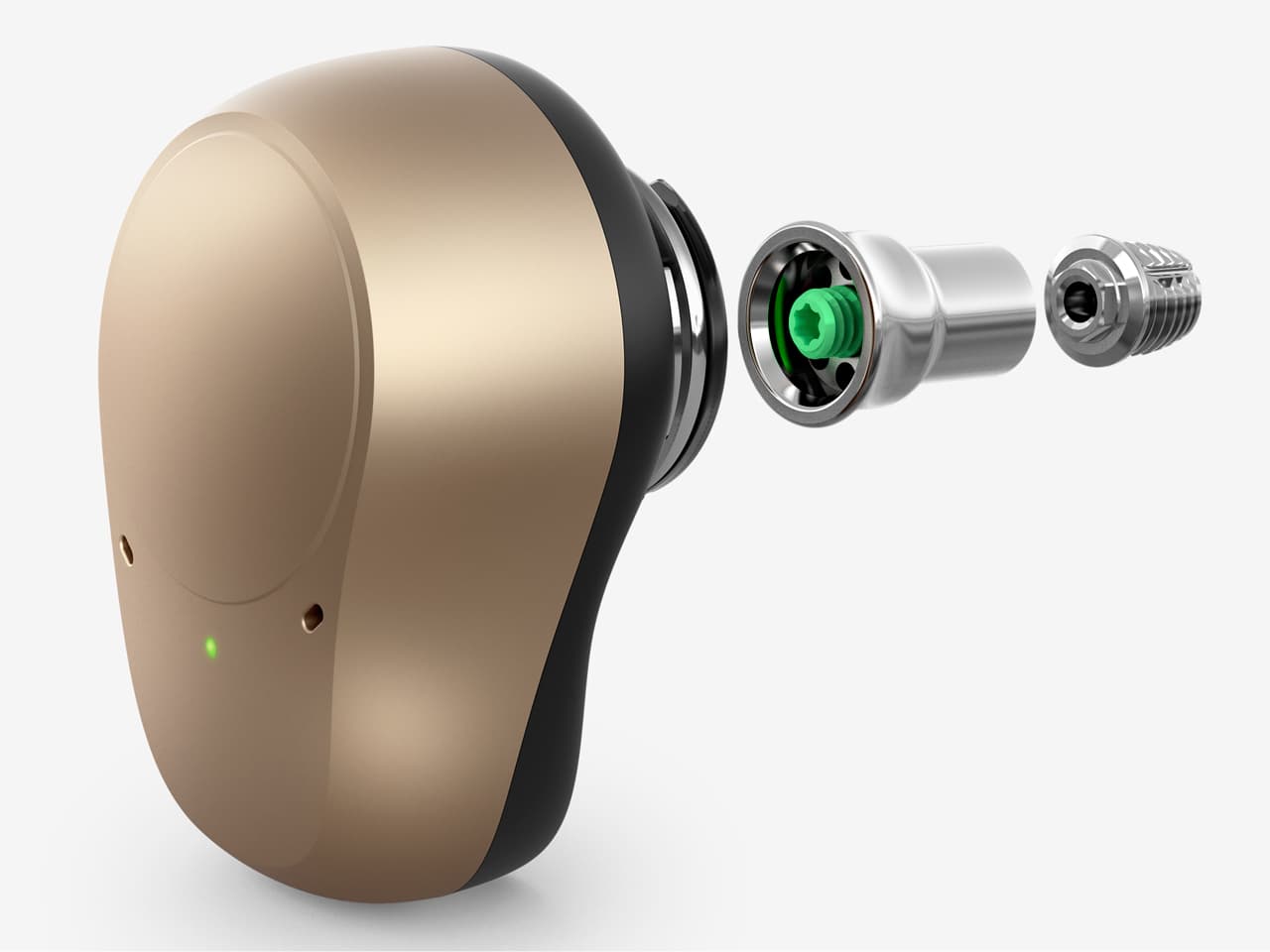
The different stages of the intervention
The surgical procedure
It is performed under general or local anesthesia in the operating room, on an outpatient basis unless medically contraindicated. Dr. Delagranda reserves the use of local anesthesia for this procedure for very special cases.
The surgery consists of several stages:
- Locating the ideal area for insertion (at the top and back of the external auditory canal, at a distance from the outer ear so that the case cannot touch it, which would interfere with proper functioning, on a smooth area, putting the top of the outer ear and the top of the case on the same horizontal line). A CT scan can be useful, but is not compulsory.
- Measure skin and sub-skin thickness.
- Infiltrate with a product that limits bleeding.
- Remove a core of skin and subcutaneous tissue.
- Remove the periosteum from the area to be milled.
- Mill the temporal bone of the skull to form a well.
- Screw the titanium abutment-fixture assembly into the shaft bone using a very slow but high-torque motor.
- Place greasy tulle around the abutment and a protective silicone cap on the abutment.
Post-operative recovery period
The patient is discharged home the same day, unless living alone in the event of general anaesthesia.
A 7-day leave from work is possible.
Pain is minimal and brief. It is controlled by Class I analgesics.
Post-operative care at home: nothing for 5 days, no nursing care, the protective cap and fatty tulle must be left in place for 5 days. These will be removed by the surgeon himself. Then clean daily with soap and water, for the rest of your life.
Scarring : No visible scarring, but the abutment remains visible.
Precautions: Shock should be avoided for the first 8 weeks to prevent osseointegration of the titanium fixture.
Complications and incidents related to the fitting of bone-anchored hearing aids
In addition to the risks inherent in any surgery involving general anaesthesia, bone-anchored hearing aids present these risks of complications:
- Slight cutaneous or subcutaneous bleeding (simple coagulation stops this phenomenon).
- Venous bleeding from a vein called the lateral sinus coming from the intracranium (simple coagulation and fitting of the bone conduction implant stops this phenomenon, or bone wax and the choice of another fitting site during the same operating time).
- Cerebrospinal fluid leakage (this problem is usually solved by fitting the bone conduction implant).
- Surgical site infection (antibiotic treatment and nursing care are the solution)
- Bone conduction implant osseointegration failure (<1%)
- Minor skin reactions (reduced since minimally invasive techniques)
Holgers classification:
- Holgers 1: mild edema and redness
- Holgers 2: edema, redness and skin oozing
- Holgers 3: edema, redness, oozing skin and granulation tissue
- Holgers 4: strong signs of infection (pus, detachment, major redness)
There may also be remote incidents that are not complications, such as a fall or accident with a very strong bite.
Broken abutment: the broken abutment can be removed and a new one replaced on the fixture under local anaesthetic.
Broken or dislocated abutment and bone conduction implant: a bone conduction implant-abutment assembly will need to be replaced in a different location during a new surgery under general anaesthetic.
Please refer to the College of ENT’s information sheet on bone-anchored hearing aids for further explanations and exceptional complications (link).
➔ Fiche explicative du collège d’ORL sur la pose de prothèse auditive à ancrage osseux
Frequently asked questions
Here is a selection of questions frequently asked by Dr Delagranda’s patients during consultations for bone-anchored hearing aids in La Roche-sur-Yon.
Is the operation compulsory?
No, it is purely functional, but recommended for better hearing. Nearly 88% of patients are satisfied with their hearing aid.
Is the result immediate?
No, it takes several weeks (6 to 8) before the sound processor can be clipped onto the abutment, due to the osseointegration time of the titanium fixture in the temporal bone of the skull.
Can I try this before deciding to have the operation?
Yes, you can get a good idea of the hearing improvement you can expect from a bone-anchored hearing aid by trying out a vibrating device attached to the skin of the skull with a headband. Better hearing will be obtained with the bone-anchored prosthesis than with the headband, which is motivating if the patient is already well improved by wearing the headband device (10 to 15 dB more).
Do I have to wear the sound processor all the time?
No, you can wear it during the day and take it off at night to sleep, take a shower or practice a water or contact sport.
Are there any precautions to be taken with a bone-anchored prosthesis?
- Yes, the abutment and the skin around it must be cleaned daily with soap and water to prevent dead skin build-up and infection. The central part of the abutment can be brushed to avoid transmission problems between case and abutment due to dirt accumulation.
- Yes, the sound processor must be removed in the event of water sports, contact or violent activity, or if there is a risk of snagging the abutment.
Can I have an MRI or CT scan with my abutment and bone conduction implant?
Yes, titanium allows these 2 examinations. Don’t forget to remove the case, however, as it contains ferrous or ferric elements that are not compatible with MRI.
When should I go back to work after my surgery?
Theoretically quickly, but due to the anaesthetic and the need to wear a silicone healing cap and fatty tulle for 5 days, we recommend waiting at least 5 days and the first follow-up consultation with the surgeon.
Is a bone-anchored hearing aid permanent?
No. The abutment, which holds the external case in place, can be easily removed. The fixture must remain in place, but must not protrude beyond the skin.
Fees and payment for the procedure
The fitting of bone-anchored hearing aids is covered by health insurance. Contact your mutual insurance company to find out whether any extra fees will be covered.
Do you have a question? Need more information?
Dr Antoine Delagranda will be happy to answer any questions you may have about bone-anchored hearing aids. Dr Delagranda is a specialist in ENT surgery at the Saint Charles Clinic in La Roche sur Yon.
ENT consultation for a bone-anchored hearing aid in Vendée
Dr Antoine Delagranda will be happy to answer any questions you may have about bone-anchored hearing aids. Dr Delagranda is a specialist in ENT surgery at the Saint Charles Clinic in La Roche sur Yon.


